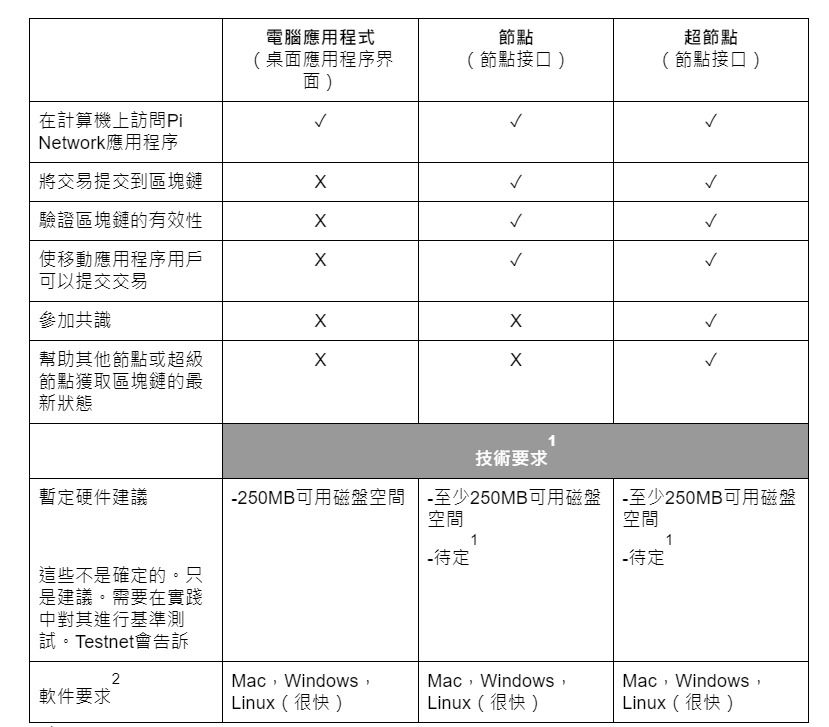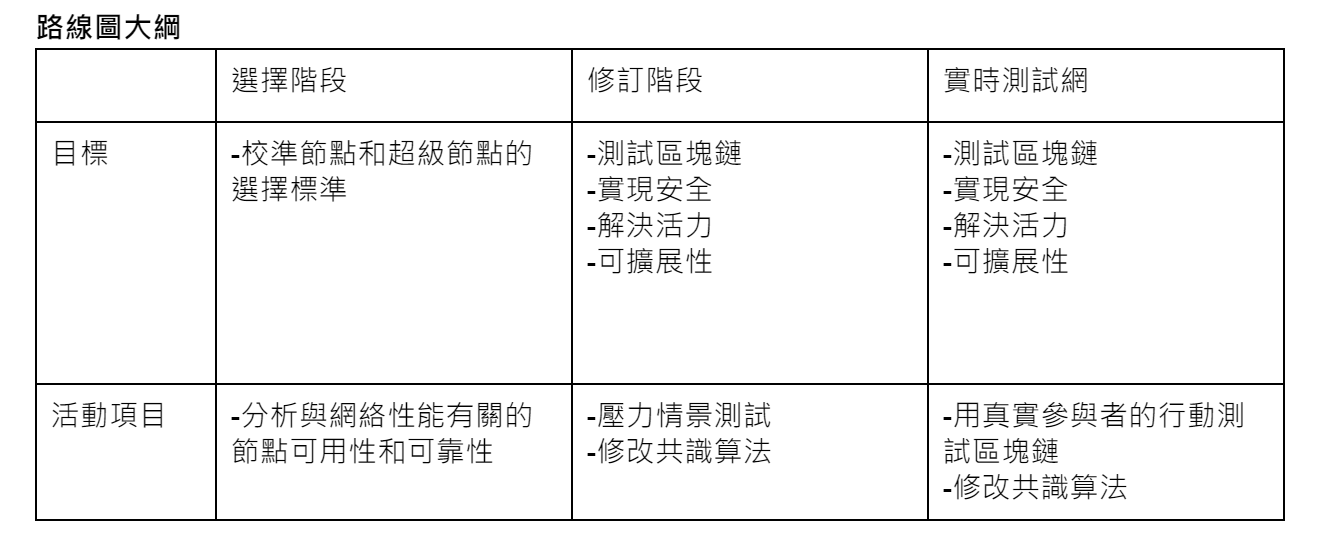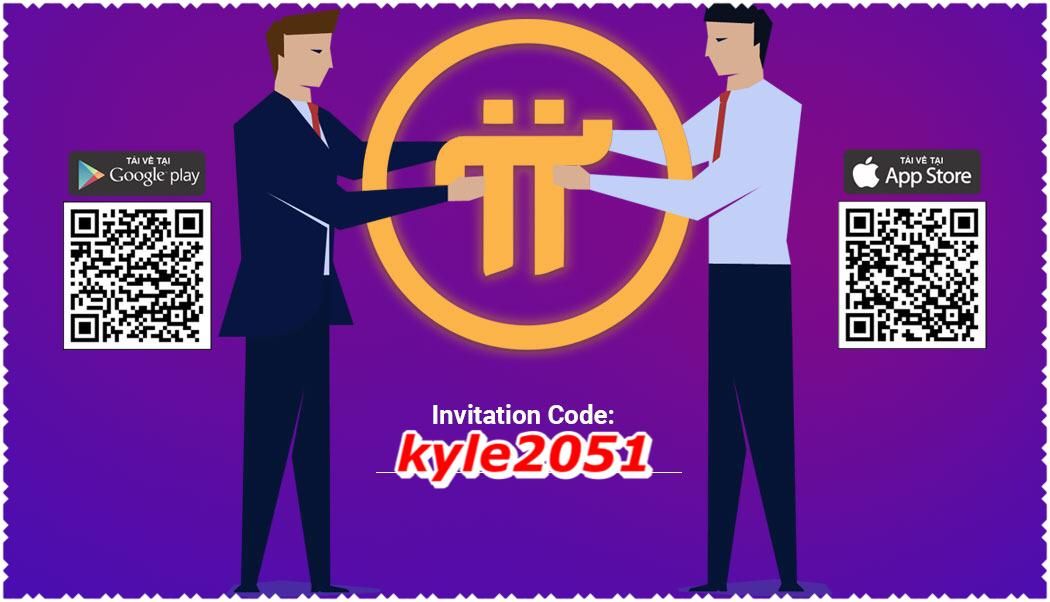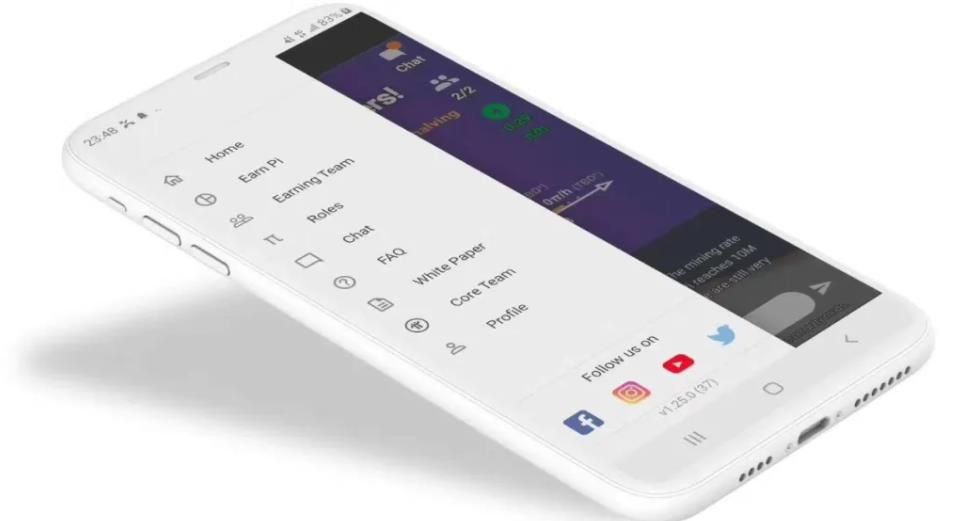The Pi Network team is busy testing the nodes to prepare for the mainnet, but people in the third world are thinking about how to monetize?

The Pi Network team is busy testing the blockchain test network, and hundreds of thousands of Pi pioneers are helping to test Pi Node. Everyone is preparing for the main network, and people in the third world are thinking about how to sell their accounts all day long! !
It turned out that the testnet was quietly launched as early as June. The following will share the testnet belonging to the official website. The block generation time is 5 seconds. At the time of writing, the block 1580987 has been generated.
To popularize the concept of a blockchain test network and main network, what are they?
What is a testnet?
Test net is relative to the main net. The main net refers to a blockchain network that is officially launched and can operate independently. The digital currency circulating on the main net has real economic value. Then the test network is the predecessor of the main network, which is the beta version of the public chain in the future. It has similar functions to the main network and is mainly used for rapid development iterations of projects and early participation of community members.
What is the mainnet?
Main net is relative to Test net. Refer to the definition of Bitcoin main network on bitcoin.org. Main net refers to the original and main network of Bitcoin transactions, and the circulation on it. Bitcoin has real economic value. The main network of the public chain refers to the officially launched and independently operated blockchain network, and the transaction behavior on the network is recognized by all members of the community.
The following is the introduction of the Pi Node page, translated version
Disclaimer: This document describes the plans for the first release of Pi Node and the Testnet based on the current situation and data, based on what we know so far. Since Pi's initial Testnet was built to test and refine Pi's blockchain, this plan may change as more data is generated by the Testnet to guide the next steps. That's why it's called Testnet.
introduce
Nodes are the fourth role in the Pi ecosystem, and they run on laptops and desktops rather than phones. Similar to other blockchains, Pi nodes will be responsible for validating transactions on the distributed ledger and solve the challenges of maintaining a distributed currency by having all nodes "consensus" on the order in which new transactions are to be recorded.
Unlike nodes that use proof-of-work (such as Bitcoin or Ethereum), Pi Node uses a different consensus algorithm based on the Stellar Consensus Protocol (SCP). In SCP, nodes form trusted groups (quorum slices) and only agree on transactions that those trusted nodes agree on. Pi Mobile Miners' Security Circle (see Pi FAQ: What is a Security Circle? ) aggregates into a global trust graph that enables Pi nodes to form quorum slices to determine who can and cannot verify transactions on the shared ledger.
Unlike most other crypto projects, Pi Node will continue to follow a user-centric design philosophy. A day-to-day job requires no in-depth technical knowledge to set up a node, but can do so by installing a desktop application on your computer. Through this computer application, Pioneer can turn on/off the node software to make its device available/unavailable as a node.
Pi will continue to follow a progressive decentralization approach when developing its Testnet. During the initial Testnet, Pi's blockchain component of node software, Pi, will have a centralized layer to enable faster iteration of scenario stress tests and adaptation of consensus algorithms to suit the needs of the Pi Network and its global community (see "Testnet Roadmap" section). The initial release of this node is the first step towards building the Pi Testnet and eventually a fully decentralized mainnet.
This version of Node includes two interfaces: the Node interface and the desktop Pi App interface. Depending on the level of participation defined in the sections below, Pioneers can use both interfaces accordingly. Every mobile user can download the node software to their computer and use their desktop Pi App interface, as it is similar to the mobile app's interface and allows people to check their Pi balance, watch media content and log in to their personal computer Chat on the Pi. Each pioneer can also apply to become a node through the node interface and install blockchain components there. Initially, the core team will have a selection phase (see Section - Testnet Roadmap) to calibrate node selection criteria based on device reliability and connectivity. When the core team selects a node, they need to pass KYC to continue acting as a node on the Testnet. See more details in the section: Node and Supernode Selection Process.
Node participation level
There are currently three levels of participation by Pioneers using the Pi Node software on their computers.
computer application
Computer App refers to the desktop Pi App interface that only uses node software. It made it available to pioneers who wanted to interact with the Pi app from their computer, so it had similar functionality to the mobile app. For example, many pioneers have said they want to be able to chat on the Pi from a computer rather than a phone. Therefore, we designed the desktop Pi App interface on the Pi Node software and combined this interface with the node software . Also, in the future, as more features are added to the Pi App, such as the Apps Platform and various Apps on the platform, some of these features may be more accessible through the desktop interface than the mobile app.
node
Node means that Pioneers access the node interface , complete the necessary technical preparations according to the instructions, and turn on/off the Node interface so that their computer can run the blockchain components after being selected as Node. Although they do not participate in consensus, they verify the validity of the blockchain and submit transactions for record on the blockchain. In the future, when Pi's blockchain expands to go beyond securing the ledger, nodes will expand to include computers that contribute to the network's collective hardware resources such as computation, storage, and bandwidth.
super node
Supernodes are the backbone of the Pi blockchain. In addition to being responsible for all the duties performed by the nodes, they are also responsible for reaching consensus based on the algorithm that writes the correct transactions on the Pi ledger. They are also responsible for ensuring that other supernodes and nodes get the latest state of the blockchain. Supernodes also utilize the node interface and are initially chosen by the core team. They need to be connected to a 24/7 network and have a reliable Internet connection.
See the table below for a summary of the three levels of participation in the Pi Node software and the hardware and software requirements for computers at each level of participation.

notes:
- The more precise hardware and software defined for the Pi nodes will require additional data from the initial Testnet of nodes in the " selection phase" defined in the selection net below on how the nodes perform on various hardware and software configurations.
- When installing node on Windows, Microsoft Defender SmartScreen may display a warning when many people suddenly install a new application downloaded from the Internet. This may be the case with Pi Node due to our large user base. Microsoft Defenders will stop showing this warning as more Pioneers accept to install the Pi Node software.
Selection process of nodes and super nodes
Apply to act as a node or supernode on Pi's Testnet: Download and install the Pi Node software on your computer Fill out the Pi Node application in the Pi Node software Install the technical packages according to the instructions on the node interface and keep the software running as much as possible (it can run in the background). The core team will then select nodes and supernodes based on the criteria defined in the next section.
Selected Node and SuperNode applicants will be notified on a rolling basis through the Node interface over the next 3 months. The number of pioneers selected will be determined by the number of applicants who meet the selection criteria listed in the next section.
Selection Criteria for Nodes and Supernodes
After the initial screening period, nodes and supernodes are selected based on the following criteria. While both will be evaluated on similar criteria, nodes will have lower thresholds than super nodes.
Uptime (i.e. online 24/7) Good internet connection (fast and stable) (initially) the ability to open ports on the local router Sufficient processor and memory (recommended checklist) Previous Contributions to the Pi Community Security Circle
Based on your node reliability and trust score in Pi Network, you will be invited to join KYC. Applicants who complete KYC will be registered as SuperNodes and Nodes in Pi's Testnet.
During the initial Testnet, the main goal was to stress test the network's consensus algorithm. While not all Pioneer companies have the hardware, software and network reliability to participate in the initial Testnet, Pi has always strived to be as inclusive as possible. All Pioneers will continue to be able to participate through Pi's mobile app. Additionally, over time, we also aim to make node roles more accessible by developing other ways in which Pioneers can contribute to the network
Testnet Roadmap
Testnet will consist of three phases.

Selection stage
The core team will run the consensus algorithm with Pioneers who have applied to become nodes and have successfully completed installing all necessary software packages for the blockchain components on their computers. These tests will allow us to understand the requirements of individual nodes (e.g. hardware, online duration, bandwidth, connection stability, etc.) needed to implement a reliable and secure network. Although we want to include as many pioneers as possible when defining node requirements, the availability and reliability of individual nodes in the network can affect the security and liveness of the network. Therefore, we need to balance the above two aspects by testing in the selection phase and correctly define the thresholds for nodes and supernodes.
revision stage
The revision phase will consist of an iterative process of two activities: scenario testing and consensus algorithm revision . Scenario testing refers to stress testing the consensus algorithm, its scalability and configuration under a given scenario. The data from scenario testing will then guide us on where and how to modify and adapt the consensus algorithm to ensure security, improve liveness, and achieve scalability.
This fast iterative process is important for improving the consensus algorithm to meet the needs of Pi Network. Therefore, in this phase, the blockchain component of this node version contains a central layer that will allow the core team to quickly distribute network graphs and configuration mock data to different nodes to more efficiently test various scenarios and states . network. For example, this feature enables the core team to test consensus algorithms by assigning simulated security circles to different nodes, rather than just relying on the security circle's current data (this is just one case), this feature enables the core team to create hundreds of Even thousands of arbitration schemes. in the network. Interesting scenarios also include: what if half the network is quarantined? What happens when a certain percentage of nodes in the network suddenly exit or enter the network? This centralized layer will be removed from the mainnet after it reaches testing purposes.
In turn, the data generated from these tests can satisfy the revision requirements of the consensus algorithm. As Pi adapts and expands the Stellar Consensus Protocol to meet the needs of the Pi blockchain (e.g. large number of participants, highly decentralized personal computers as nodes, incorporating trust graphs generated by mobile miners, etc.), Pi will face unique challenges. The revision phase will allow the network to test things like extended messaging and network voting processes, while maintaining security and liveness. Activities to revise the consensus algorithm include data analysis and research to innovate solutions tailored to Pi Network's needs.
Live Testnet
The live testnet will be the stage where different types of nodes actively perform the responsibilities defined in the table above (see Node Participation Levels). Nodes will be able to submit test transactions that are recorded by the node in the distributed ledger through a consensus algorithm. The purpose is still to test the performance of the network, but using real data from the security circle generated by mobile miners and real activities of network participants. It also incorporates an iterative process of testing, data analysis, debugging, revisions, and innovation to achieve security and deal with real-time and scalability.
Node FAQ
What is the relationship between the Pi Node software and the Pi Network mobile app?
Node and mobile applications are not mutually exclusive, but complementary to each other. You will log into the Node software through your mobile app account, which means both the desktop and mobile apps point to the same Pi account. As a Pi policy, one person can only have one Pi account, and so far, one account can only run one node. Mobile mining can only be started from the mobile app, and the node's desktop Pi App interface will allow you to check your balance, chat and watch any media content on the home screen. Whether an account has nodes or not does not affect any functionality in the mobile app.
How will nodes affect my device? Will it drain my CPU and battery?
If you don't open the Node or SuperNode section, the impact is minimal and should consume very little CPU, memory, or network traffic, making it accessible to everyone. Turning on a node or supernode function will use CPU, memory, hard drive and network resources. Over the course of the Testnet, we will collect data to more clearly determine the impact of running a node on a specific device.
Are there rewards for running Pi Node?
One of the goals of Pi's Testnet is to determine the reward, if any, that a node should receive for running it. Testnet nodes will not receive any mining rewards, although we collect the relevant data needed to determine the most suitable incentive mechanism.
Is Pi Node Software open source?
Node's blockchain component will be open source. We are in the process of tidying up the github repository so that we can continue to open source. Our goal is to maintain a list of open issues directly on the github repository, to which community members can contribute as needed. stay tuned. https://github.com/pi-node
Pi Testnet
The Pi testnet started in June 2020 and is currently in a busy test. Interested friends can open: testnet1.minepi.com:31401 to view the test (testnethou suffix 1. can be changed to 2.3.4).
{
"_links": {
"account": {
"href": "http://testnet3.minepi.com:31401/accounts/{account_id}",
"templated": true
},
"accounts": {
"href": "http://testnet3.minepi.com:31401/accounts{?signer,asset,cursor,limit,order}",
"templated": true
},
"account_transactions": {
"href": "http://testnet3.minepi.com:31401/accounts/{account_id}/transactions{?cursor,limit,order}",
"templated": true
},
"assets": {
"href": "http://testnet3.minepi.com:31401/assets{?asset_code,asset_issuer,cursor,limit,order}",
"templated": true
},
"offer": {
"href": "http://testnet3.minepi.com:31401/offers/{offer_id}",
"templated": true
},
"offers": {
"href": "http://testnet3.minepi.com:31401/offers{?selling,buying,seller,cursor,limit,order}",
"templated": true
},
"order_book": {
"href": "http://testnet3.minepi.com:31401/order_book{?selling_asset_type,selling_asset_code,selling_asset_issuer,buying_asset_type,buying_asset_code,buying_asset_issuer,limit}",
"templated": true
},
"self": {
"href": "http://testnet3.minepi.com:31401/"
},
"strict_receive_paths": {
"href": "http://testnet3.minepi.com:31401/paths/strict-receive{?source_assets,source_account,destination_account,destination_asset_type,destination_asset_issuer,destination_asset_code,destination_amount}",
"templated": true
},
"strict_send_paths": {
"href": "http://testnet3.minepi.com:31401/paths/strict-send{?destination_account,destination_assets,source_asset_type,source_asset_issuer,source_asset_code,source_amount}",
"templated": true
},
"transaction": {
"href": "http://testnet3.minepi.com:31401/transactions/{hash}",
"templated": true
},
"transactions": {
"href": "http://testnet3.minepi.com:31401/transactions{?cursor,limit,order}",
"templated": true
}
},
"horizon_version": "v1.0.0",
"core_version": "",
"ingest_latest_ledger": 1541064,
"history_latest_ledger": 1541064,
"history_elder_ledger": 2048,
"core_latest_ledger": 1541064,
"network_passphrase": "Pi Testnet ; June 2020",
"current_protocol_version": 0,
"core_supported_protocol_version": 0
}
The above code is the real-time feedback of the Pi test network. It involves all aspects, not only correcting the distributed data of global servers, but also optimizing consensus algorithms, block synchronization, stress testing, and simulating incoming and outgoing transactions.

We can see that the testnet started in June and is currently running for about 3 months. How long does it take from testnet launch to mainnet launch?
The question that everyone is very concerned about, Pi started on March 14, 2019, and the test network was launched in June 2020. During the period of 1 year and 3 months, the Pi team must not only update the app, it does not need to do it itself. Marketing and promotion, most of the time should be preparing for the testnet. The testnet launch means that most of the work has been completed, and the final revision and optimization are currently being done. The official does not give a specific time for the mainnet launch. , but we can make a high-probability prediction based on the development history of other public chains in the past. Generally, after the test network goes online, how long does it take for the main network to go online?
eos has been used for about 5 months, filecoin has been used for 6 months so far, but the mainnet has not yet been launched. Filecoin officially expects it to be around the end of October. That is to say, from the historical point of view, the average time from the testnet launch to the mainnet launch is about 6 months, the short three months, and the long no more than 9 months. The situation of Pi is a little special, and it is necessary to exclude the ones in the network. The fake account will build a certain ecology at the same time. It should not exceed 1 year. That is to say, the time for the pi mainnet to go online will not exceed June 2021. If it is faster, the mainnet will be in December this year or March next year. is expected to be online,
The above are just personal predictions, not the final time, just for reference. For mining users, what they need to do now is to dig + preach + study every day to prepare for the future!

Come join PI NETWORK MINING (20 seconds a day, 10 minutes a month, 2 hours a year!! How much is 2 hours worth to you? But for Pi's pioneer testers only spend 2 hours a year, the rest of the time to be yourself thing)

The Pi app can be searched in Android's Play Store or Apple's App Store: PI NETWORK download, or download from the following link
Invitation code: kyle2051
iOS: https://apps.apple.com/us/app/pi-network/id1445472541
Android : https://play.google.com/store/apps/details?id=com.blockchainvault
If you need a code, enter kyle2051
Tip: You don't need to keep the Pi app open, the Pi won't affect phone performance or drain battery power or use network data. You can even close the app after pressing the lightning button and you'll keep mining the Pi. The mining of Pi will stop every 24 hours, the lightning button is pressed once again, repeating every day until the end of the distribution
Like my work? Don't forget to support and clap, let me know that you are with me on the road of creation. Keep this enthusiasm together!


- Author
- More